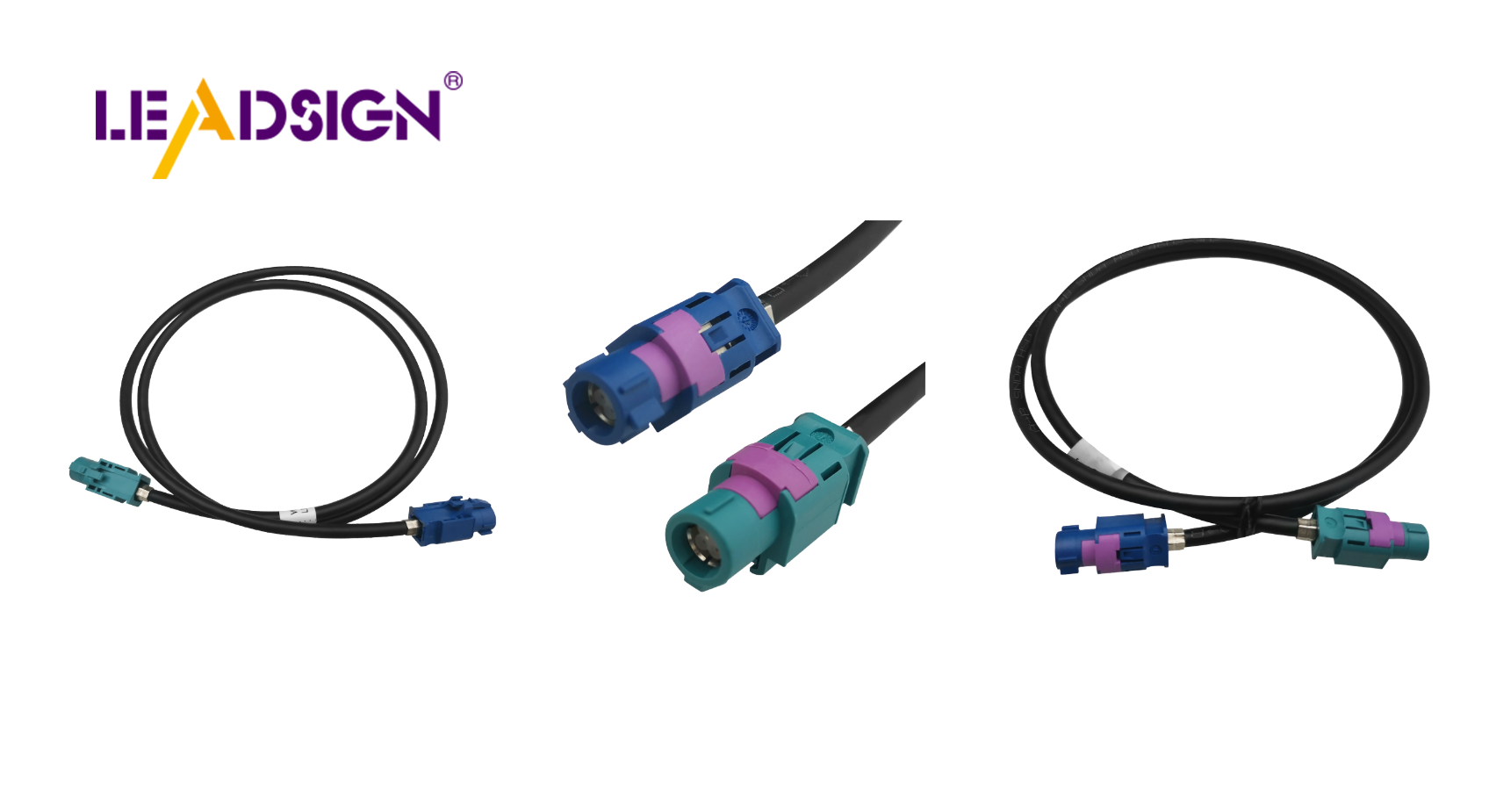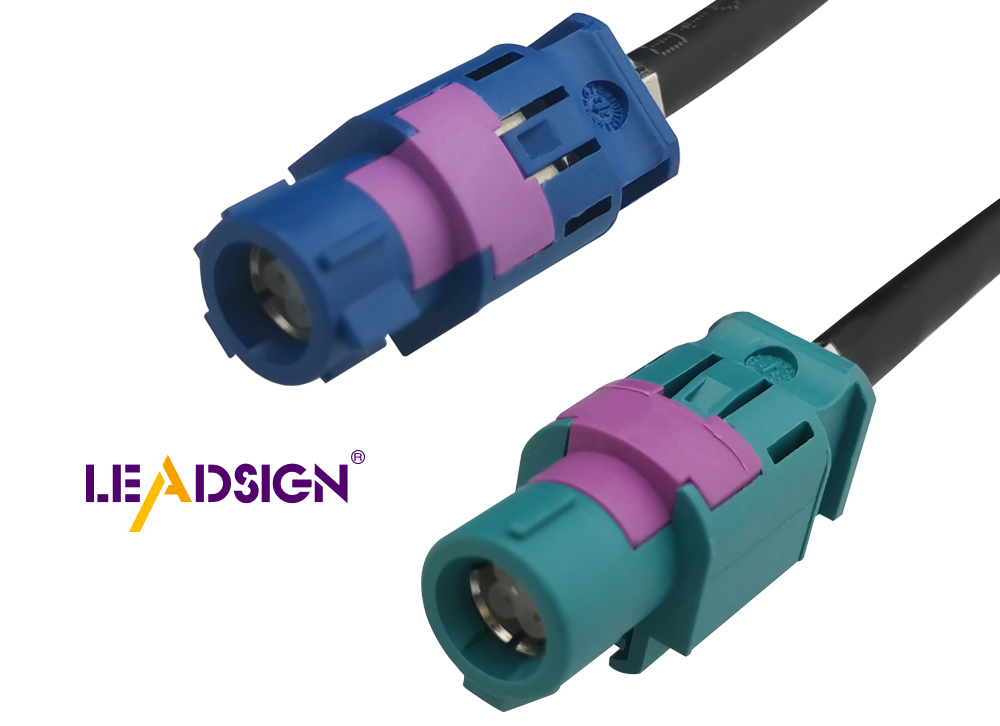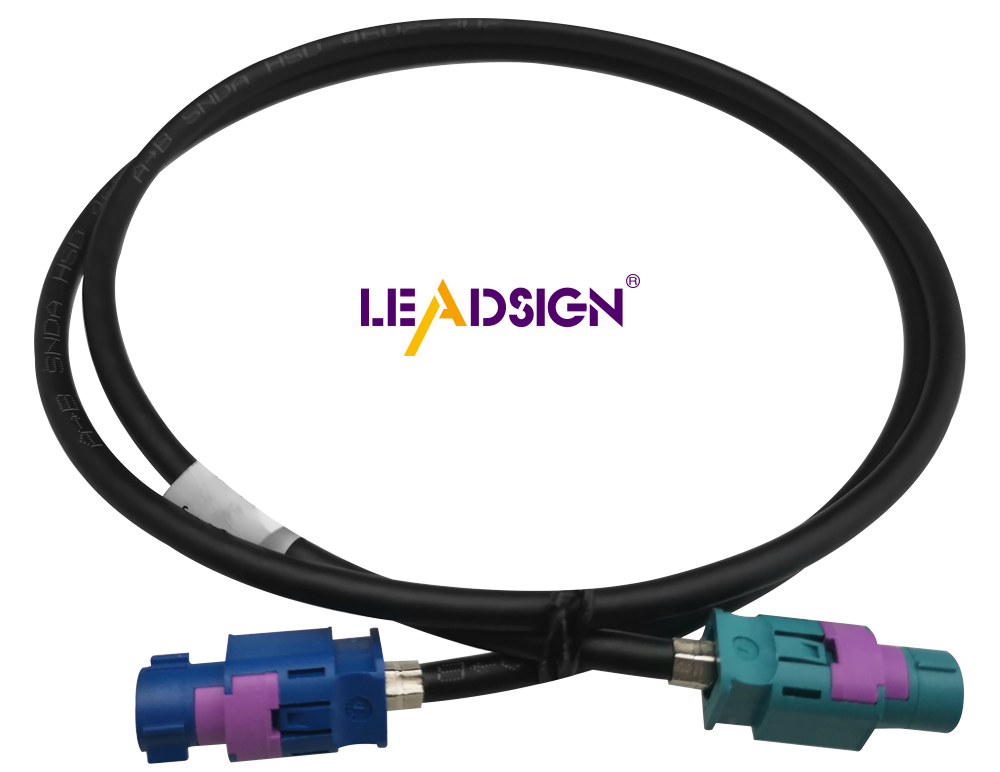Are Automotive Electrical Connectors Types Changing the Game?

Automotive electrical connectors are crucial in today's vehicles, facilitating the connection of various electronic components. As automotive technology advances, the types of automotive electrical connectors have also evolved to support innovations such as electric power systems and smart entertainment features. The market for these connectors is rapidly expanding, valued at USD 6.89 billion in 2023, with an expected annual growth rate of 6.7% from 2024 to 2030. This growth underscores the vital role these connectors play in ensuring the efficient and safe operation of modern vehicles.
Types of Automotive Electrical Connectors

Car electrical connectors are key for cars to work well. They connect different electronic parts, helping power and signals move smoothly. Let's look at some common car connectors and what makes them special.
Pigtail Connectors
Function and Usage
Pigtail connectors link different car parts. They have a short wire with a connector on one end. This makes it easy to fit into the car's wiring. They're used when direct links don't work or need more flexibility.
Advantages and Limitations
Pigtail connectors are easy to install and flexible. They're great in small spaces where movement is hard. But, they can get damaged by things like water or shaking, which might make them less reliable over time.
Terminal Blocks
Function and Usage
Terminal blocks help connect many wires safely and neatly. They're used in cars to keep complex wiring organized so each connection is strong and easy to fix or change.
Advantages and Limitations
Terminal blocks handle many connections well, keeping wires tidy to avoid shorts. But, they take up more space than other types, which can be a problem in small cars.
Bullet Connectors
Function and Usage
Bullet connectors are round connectors for quick wire links. They're used in cars where wires need frequent connecting, like lights or extra gadgets.
Advantages and Limitations
Bullet connectors are simple and easy to use. They allow fast setup for temporary connections but may not hold as tightly as others, risking disconnection if shaken too much.
Technical Parts of Connectors
Car electrical connectors have changed a lot. New materials and designs helped this change. Knowing their details helps us see their importance in cars today.
Main Parts
Car connectors have important parts that make them work well.
Contacts
Contacts are the main part of a connector. They let electricity move between parts. Makers use copper, gold, and silver for contacts. These metals are good at carrying electricity and are strong. This keeps connections steady and reliable, which is key for car systems to work well.
Shells
Shells cover connectors to keep them safe from things like water, dust, and damage. New shell designs use light and rust-proof materials. This makes cars lighter and connectors last longer.
Insulators
Insulators keep the electric parts inside a connector apart to stop short circuits. They are made from stuff that can handle heat and chemicals. This makes sure connectors work safely even in tough spots.
Accessories
Accessories include extra parts like seals and brackets. These help protect the connector more and make sure it fits right. They help keep the connection strong over time.
Special Features
Connectors have special features for different uses.
High Power Contacts
High power contacts are needed where lots of electricity moves, like charging batteries. They handle big power without getting too hot or breaking down, keeping energy moving well.
Locking Systems
Locking systems stop connectors from coming apart by accident when used. They keep connections tight even if there's shaking or movement around them. Different locks give different security levels based on what’s needed.
Automotive electrical connectors are used in many fields. Each field has its own needs. These connectors have changed how industries work. They make things run better and more reliably.
In cars, connectors help parts talk to each other. They are needed for engines, lights, and safety tools like airbags. As cars get smarter, they need better connectors for fast data and power. Electric cars need strong connectors for their systems. This shows how important connectors are in new car designs.
In telecoms, connectors keep networks working well. They connect parts in radio stations and networks so data moves smoothly. Standardized connectors make fixing and upgrading easier. This helps different systems work together better.
For digital entertainment, connectors link devices for good sound and video. They are used in USBs, Ethernet, and other systems in cars today. These must handle fast data for a good experience. As these systems grow, better connectors are needed to manage more data.
Challenges Faced by Connectors
Car electrical connectors have many problems, especially in tough places. These tough spots can hurt how well they work and how long they last. Knowing these problems helps make better fixes.
Tough Conditions
Car connectors work in places with hot or cold temperatures, wetness, and shaking. These things can cause rust, damage, and breakage. Long ago, car connectors were big and hard to use. They often didn't work well because there weren't clear rules for making them. As cars got more advanced, wire connectors became more complex, needing stronger solutions.
Design Fixes
To handle these tough conditions, makers came up with some smart ideas:
Material Choice: Picking materials that don't rust or wear out easily helps connectors last longer. Stuff like stainless steel or special coated metals is better against bad weather than old materials.
Sealing Methods: Using good sealing methods stops water and dust from getting inside. Seals made of strong rubber or silicone keep connectors safe even when it's really tough outside.
Shake Proofing: Making connectors that resist shaking is important. Things like locks and bendy parts help keep connections tight even when moving a lot.
Heat Handling: Using materials that stand up to very hot or cold temperatures keeps connectors working well. High-heat plastics and metals stop melting or bending.
By fixing these problems with cool designs, car electrical connectors get better all the time to meet new car needs. The popularity of wire-to-board connectors shows they are flexible and work well in different ways.
Future Trends and Innovations

New Technologies
Cars are changing fast with new tech. Things like better connections, self-driving, and electric cars are making driving different. As car electronics get more complex, we need better connectors. By 2030, electronics might be half of a car's cost, up from 35% in 2020. This shows how important connectors are becoming.
Effects on Car Industry
Connectivity and Automation: Self-driving and connected cars are growing quickly. By 2025, almost all new cars in the U.S. will be connected. This means we need strong connectors for sending data and power safely between car parts.
Miniaturization and Fast Data: Cars now need smaller connectors that send data quickly. As more electronic parts go into cars, connectors must shrink but still work well. Smaller designs help make cars lighter and save energy.
Smart Connectors: Future connectors will be smart enough to check themselves for problems and fix them if needed. This makes them reliable and cuts down on repairs.
Government Help: Laws help places like North America grow fast in making car connectors better. Governments push for cool tech like driverless cars, boosting the need for advanced connectors.
In short, the future of cars depends on better electrical connectors. As cars get smarter, they need good connections to work well. These changes not only improve automotive connectors but also lead to a more connected driving world.
Car connectors have changed a lot over time. They help connect electronic systems in cars easily. This helps new car technology grow. Strong connectors are needed for today's cars. They move data fast and give power well. These changes help electric and self-driving cars work better. As car tech gets better, connectors will be very important. They will shape how we travel in the future. Their growth makes cars work better and helps make driving more connected and efficient.
See Also
Maximizing Automotive Data Transfer: Cutting-Edge Connectors and Wires
Improving Data Transfer: The Significance of Fast Automotive Connectors
Transforming Automotive Connections: The Benefits of HFM Connectors
The Significance of Fakra Auto Connectors in Contemporary Cars

